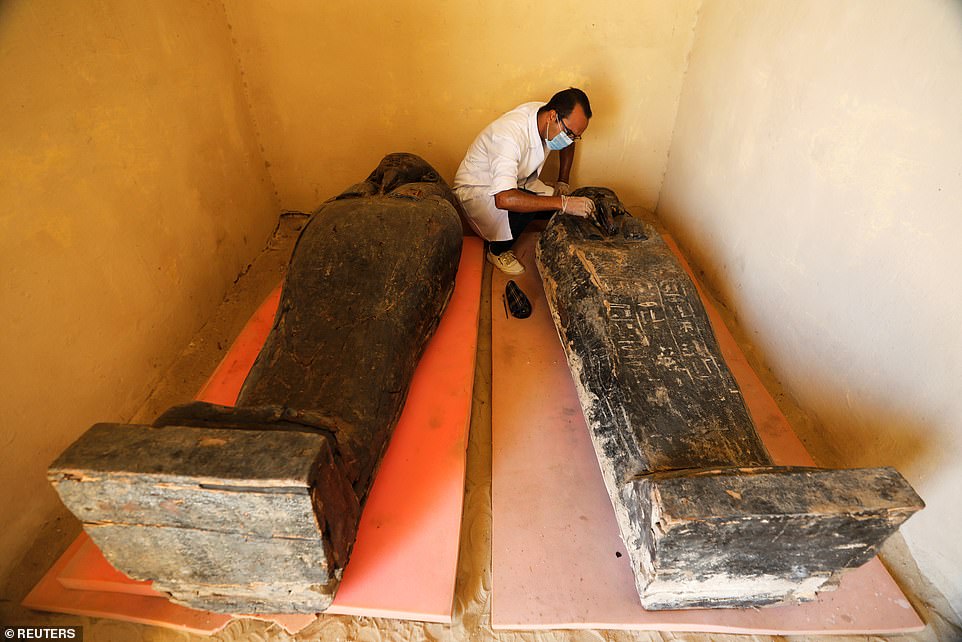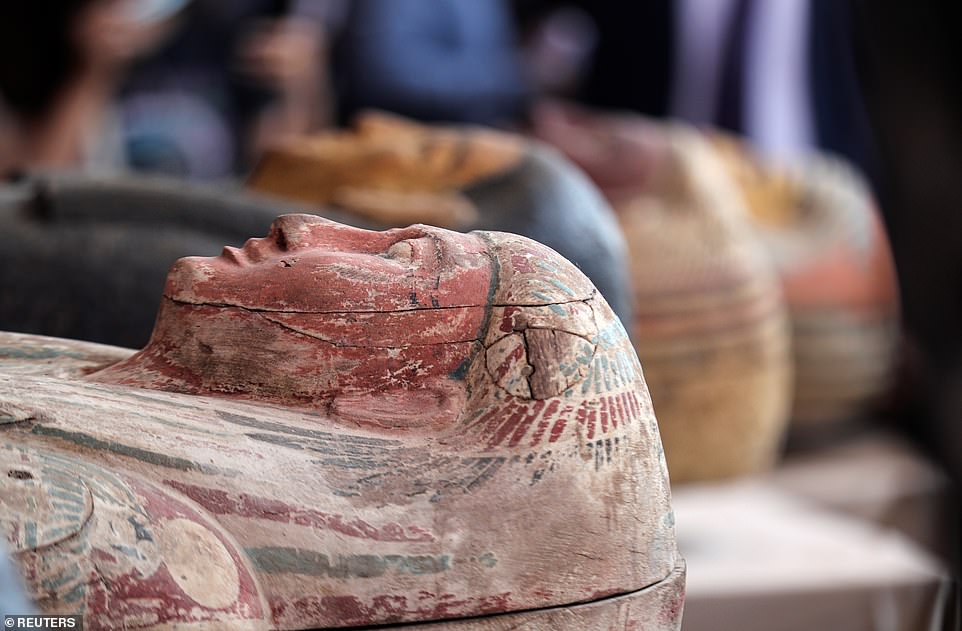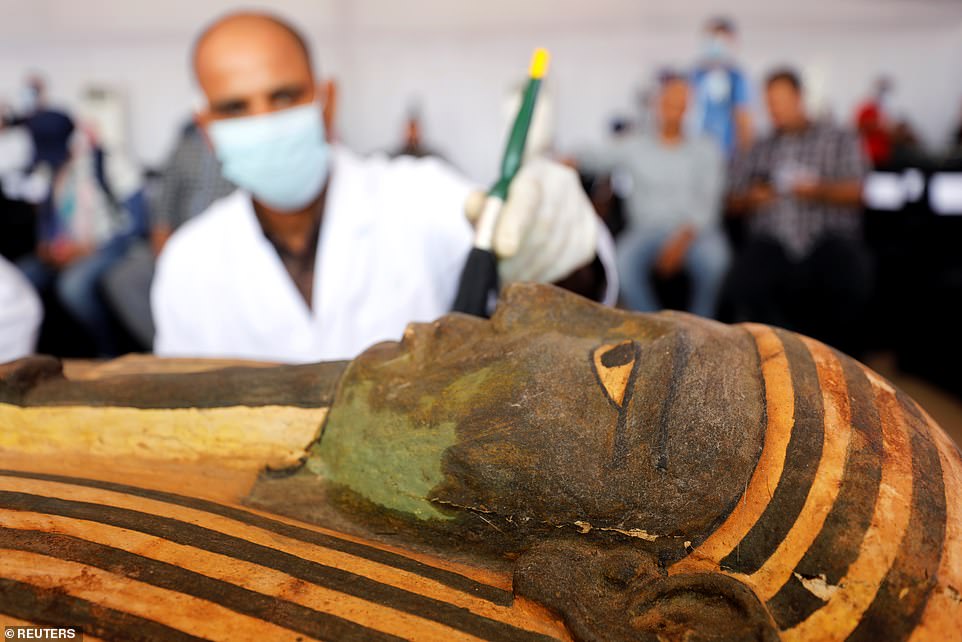An Egyptian archaeological mission has discovered a large collection of 2,500-year-old sealed sarcophagi and figurines at the Saqqara Necropolis in Giza.
Opening one of the ornately decorated sarcophagi for the first time before assembled media, the team revealed mummified remains wrapped in burial cloth that bore hieroglyphic inscriptions in bright colours.
The dramatic find was unearthed south of Cairo in the sprawling burial ground of Saqqara, the necropolis of the ancient Egyptian capital of Memphis, a UNESCO World Heritage site.
On the site – around 10 miles south-east of the Pyramids of Giza – 59 anthropoid painted coffins have been discovered so far. Around 40 were displayed to the press.
The majority of coffins housed mummified remains which initial research suggests would have been priests, top officials and elites in ancient Egyptian society.
All of whom would have likely been subject to ancient Egypt’s complex burial rituals after they died, including having their brains removed with an iron hook.
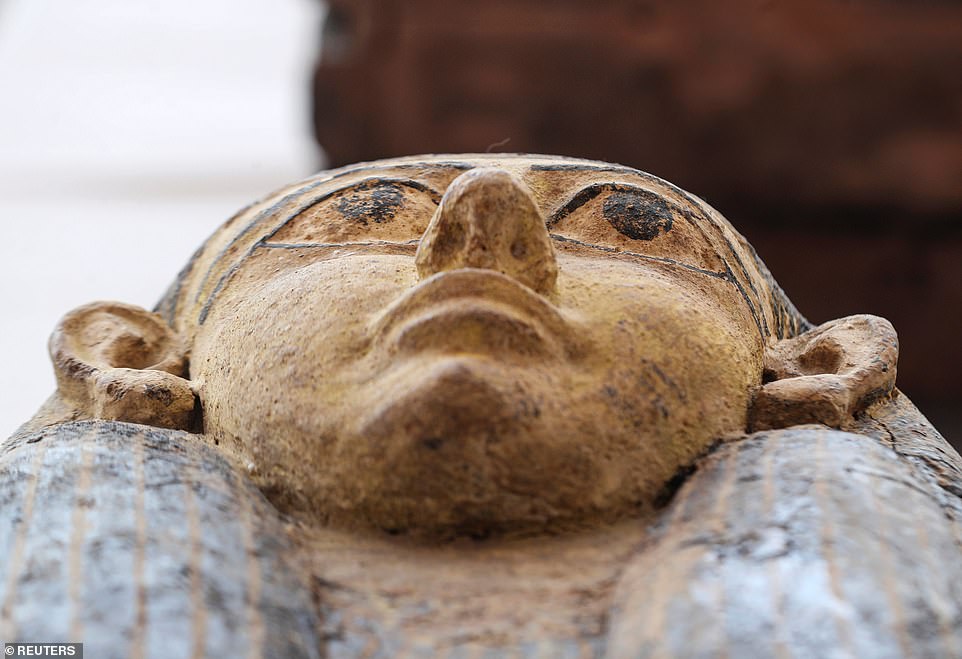
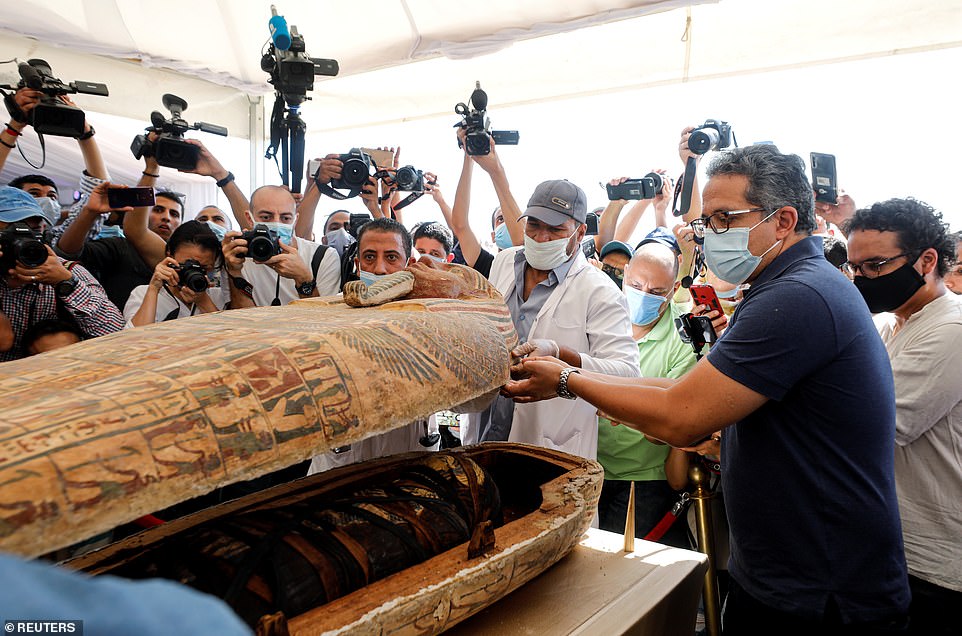
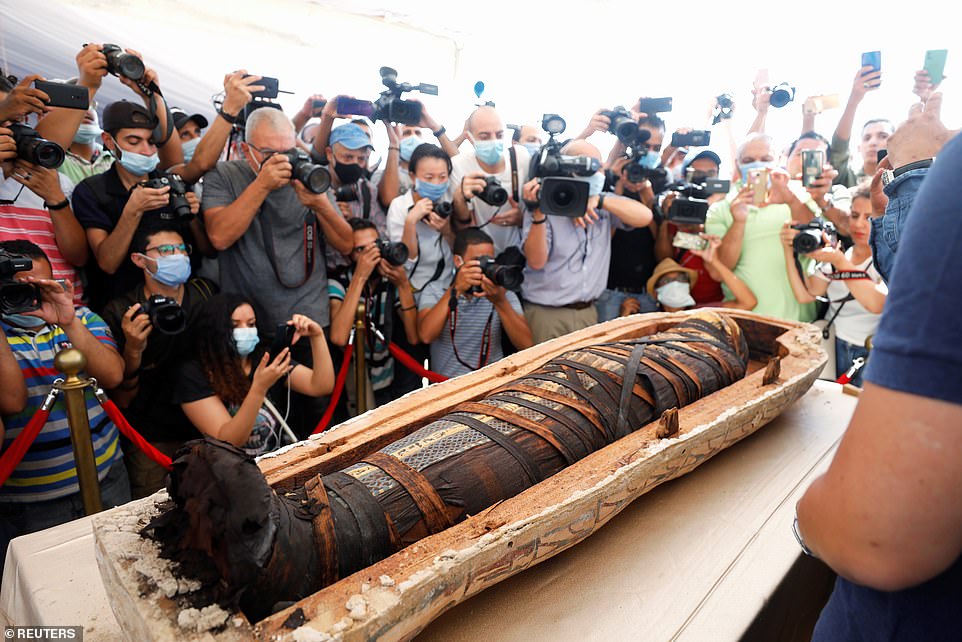
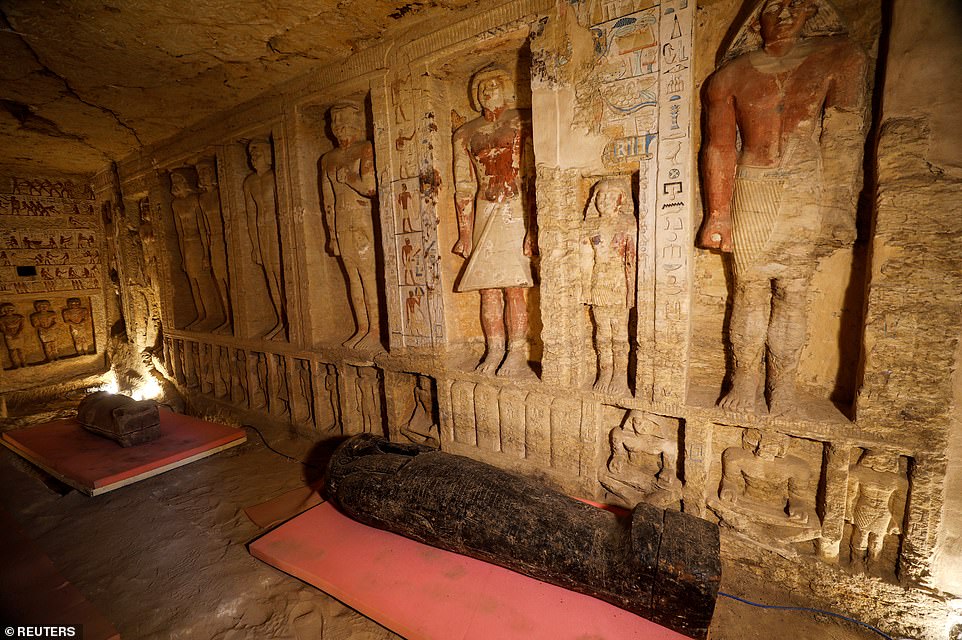

The discovery was announced on Friday by Egypt’s Minister of Antiquities and Tourism, Dr. Khaled El-Enany.
‘Today I can say most of the discoveries have been made by Egyptian teams on Egyptian soil. This is something I am immensely proud of,’ El-Enany said.
He said the mission had started re-excavating the site two months ago, and uncovered a burial shaft 36 feet deep. Inside, they found 13 intact coffins.
The team continued their excavations, discovering two more shafts – 32 and 39 feet deep – also filled with coffins.
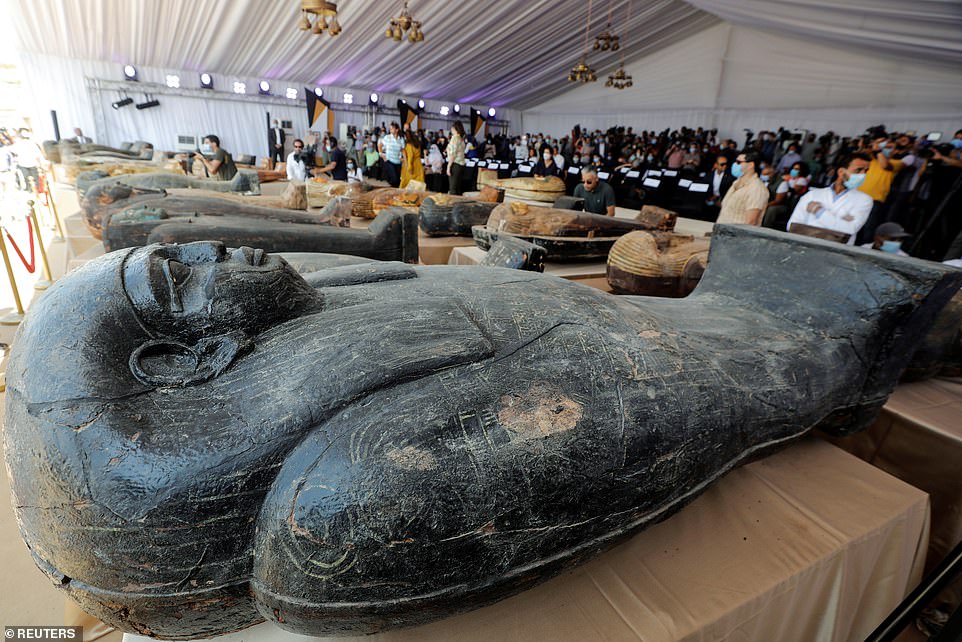


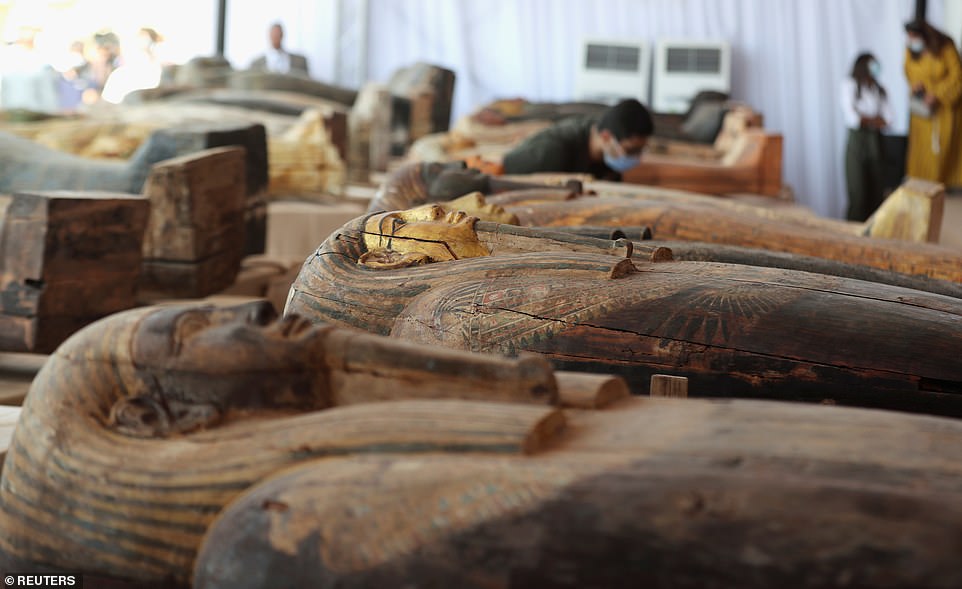


All the coffins discovered so far are in good condition and bear their original colours.
‘My colleagues in the Supreme Council of Antiquities discovered burial shafts filled with wooden, sealed and intact coffins,’ El-Enany said.
‘I am really impressed that Covid-19 did not stop them from digging to unveil more mystery and secrets about our great civilisation.’
The minister said that the coffins would be transported to the Grand Egyptian Museum to be displayed to the public.
Secretary-general of the Supreme Council of Antiquities Mostafa Waziri said initial studies found the coffins belong to 26th Dynasty priests, top officials, and elites.
There are mummies in the majority of the coffins.
In addition to the coffins, a carved bronze statue of the god Nefertum, inlaid with precious stones, was discovered, as was a collection of 28 statues of Ptah-Soker, the main god of Saqqara Necropolis.
Collections of amulets and a ushabti figurine were also found.
The Saqqara necropolis is found south of Cairo and is part of the ancient capital city of Memphis. It is also the site of the colossal rectangular-based step Pyramid of Djoser.
Work continues to be carried out to try and work out the exact history of the sarcophagi.
Egypt uses archaeological discoveries as a means to promote tourism, a sector which has been directly affected by travel restrictions put in place in response to the coronavirus pandemic.
‘We are very happy about this discovery,’ said Mostafa Waziri, secretary general of the Supreme Council of Antiquities.
An unknown number of additional coffins may still lie buried there, the tourism and antiquities minister, Khaled al-Anani, said at the site, near the 4,700-year-old pyramid of Djoser.
‘So today is not the end of the discovery, I consider it the beginning of the big discovery,’ he said.
The coffins, sealed more than 2,500 years ago, date back to the Late Period of ancient Egypt, from about the sixth or seventh century BC, the minister added.
Excavations in Saqqara have in recent years unearthed troves of artefacts as well as mummified snakes, birds, scarab beetles and other animals.
The discovery of the coffins is the first major announcement since the outbreak of Covid-19 in Egypt, which led to the closure of museums and archaeological sites for around three months from late March.

